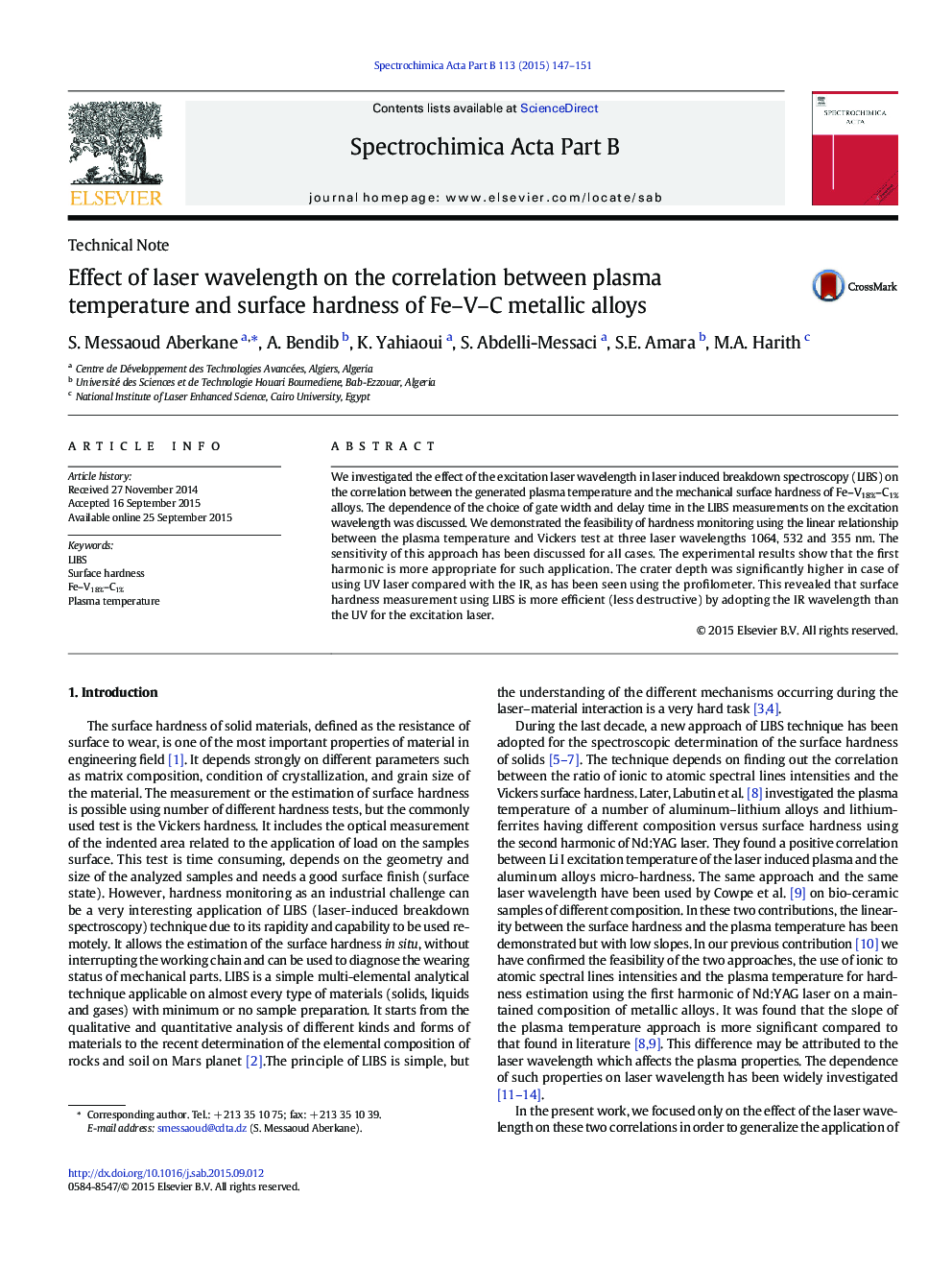| Article ID | Journal | Published Year | Pages | File Type |
|---|---|---|---|---|
| 1239488 | Spectrochimica Acta Part B: Atomic Spectroscopy | 2015 | 5 Pages |
•The application of LIBS for hardness monitoring is possible using three wavelengths, 1064, 532 and 355 nm.•Hardness of metallic target estimation using LIBS•Linear correlation between the plasma temperature and the hardness of metallic target•The ablated mass using UV wavelength is more than in the IR; hardness monitoring is less destructive in IR regime than in UV.
We investigated the effect of the excitation laser wavelength in laser induced breakdown spectroscopy (LIBS) on the correlation between the generated plasma temperature and the mechanical surface hardness of Fe–V18%–C1% alloys. The dependence of the choice of gate width and delay time in the LIBS measurements on the excitation wavelength was discussed. We demonstrated the feasibility of hardness monitoring using the linear relationship between the plasma temperature and Vickers test at three laser wavelengths 1064, 532 and 355 nm. The sensitivity of this approach has been discussed for all cases. The experimental results show that the first harmonic is more appropriate for such application. The crater depth was significantly higher in case of using UV laser compared with the IR, as has been seen using the profilometer. This revealed that surface hardness measurement using LIBS is more efficient (less destructive) by adopting the IR wavelength than the UV for the excitation laser.
